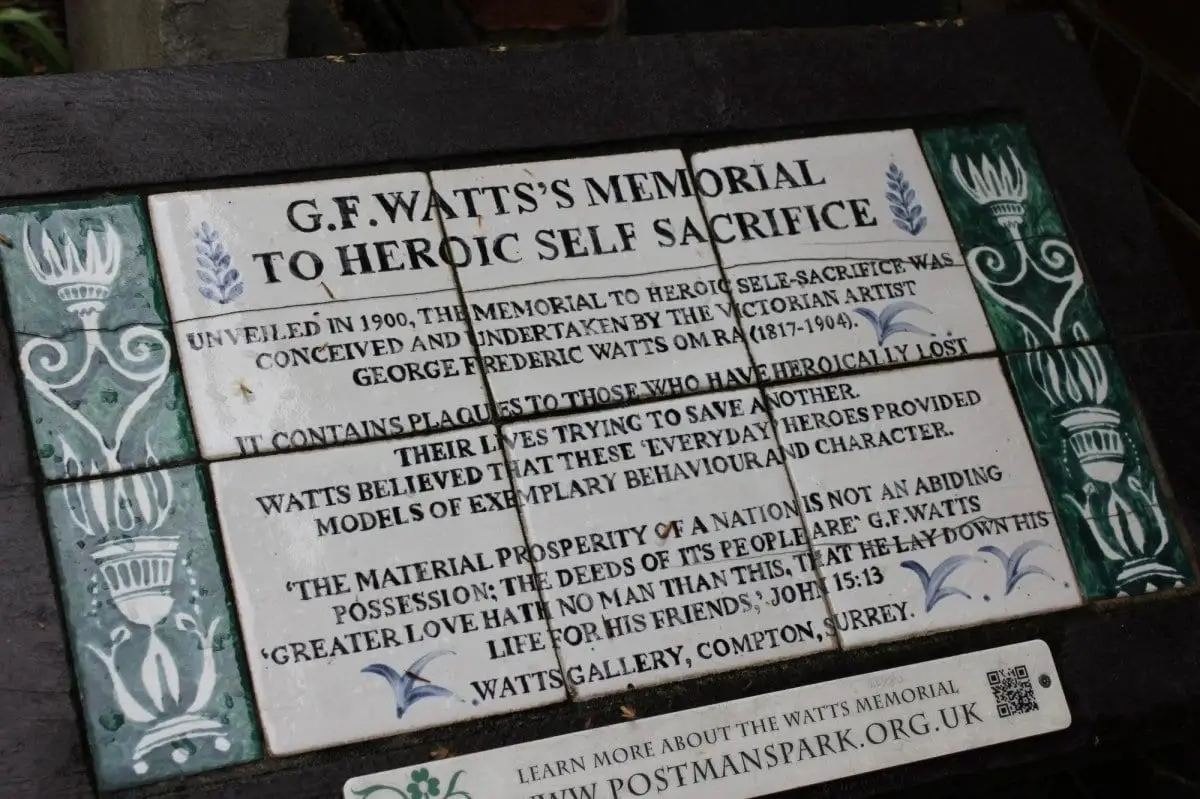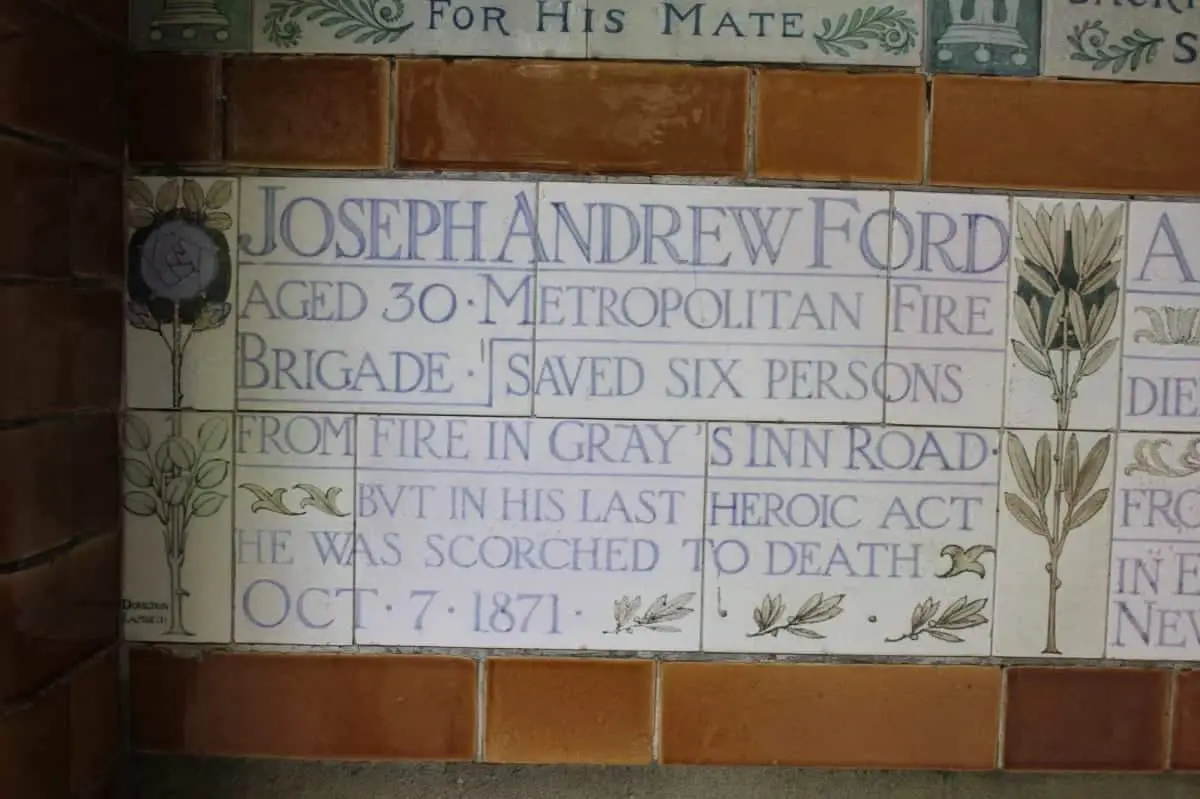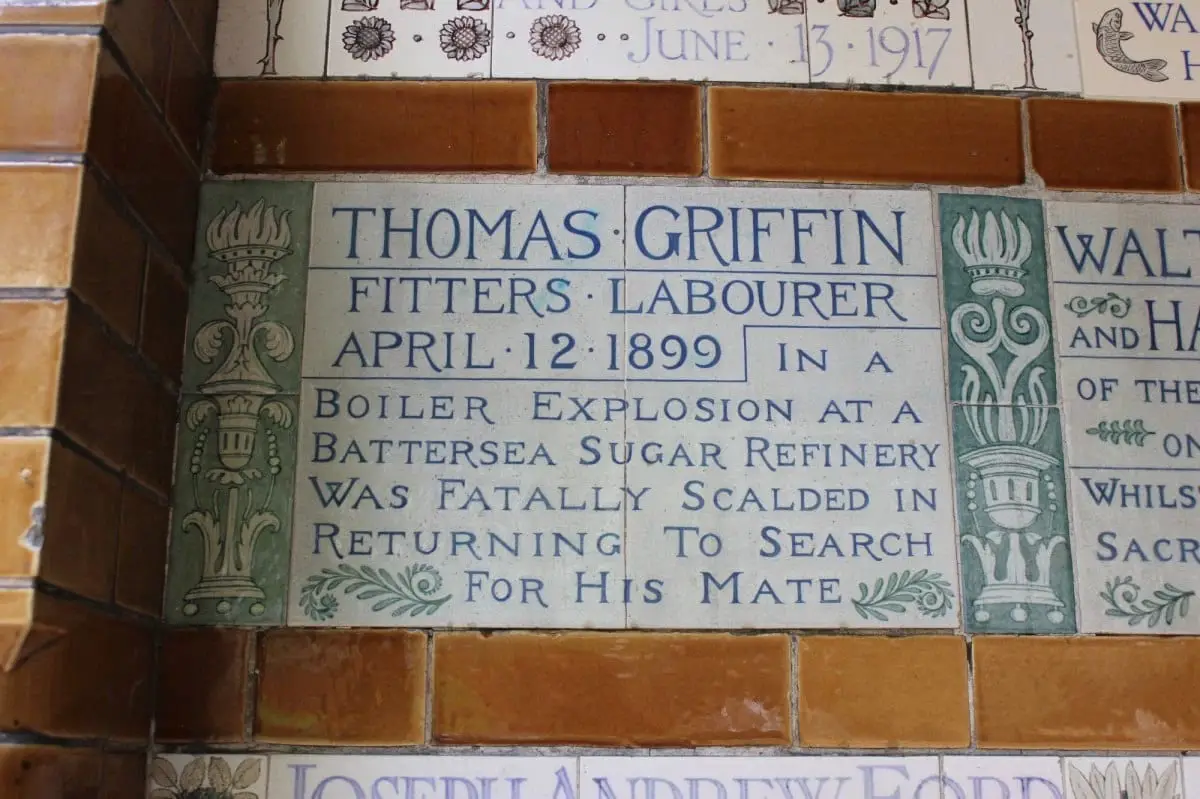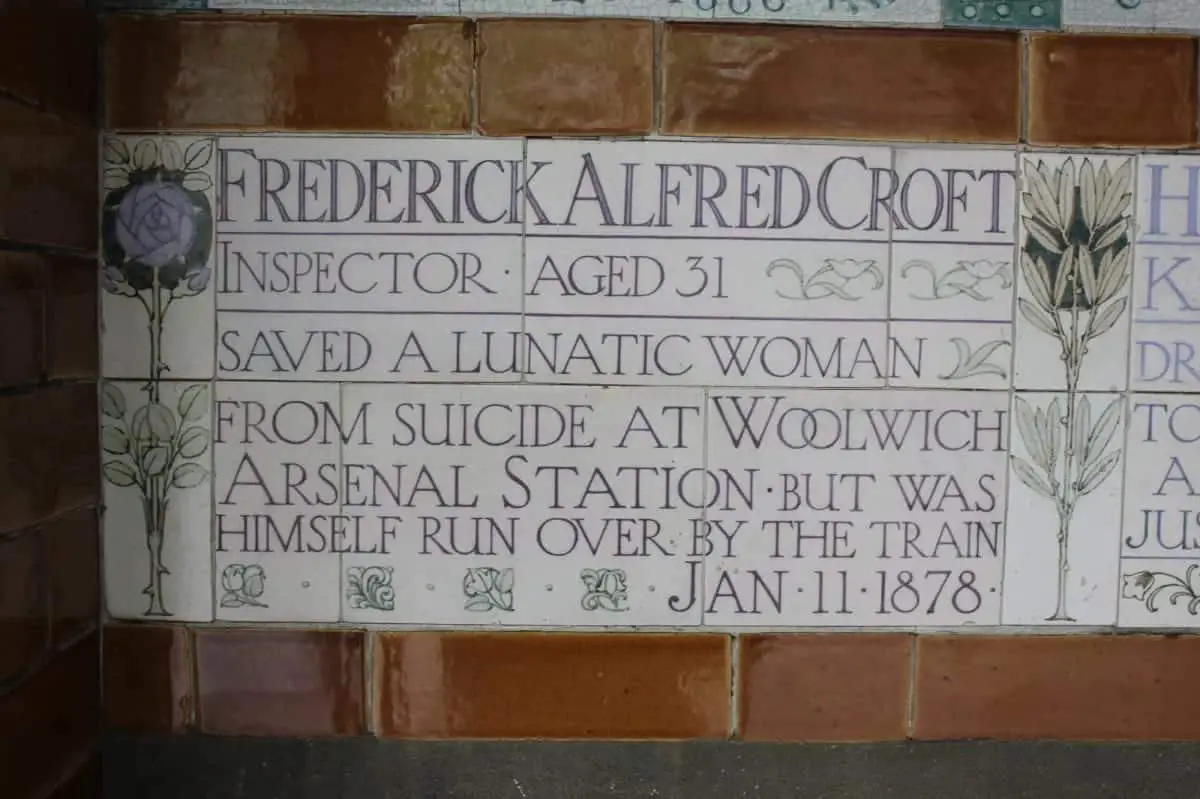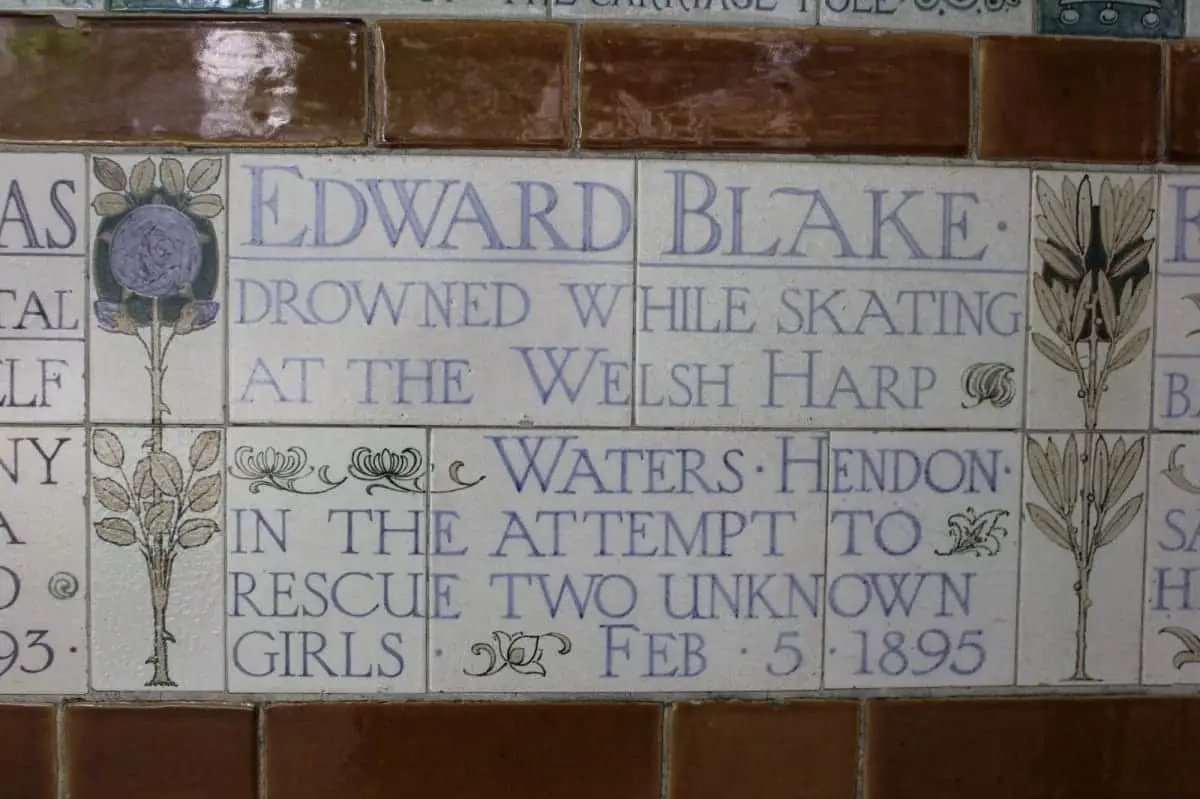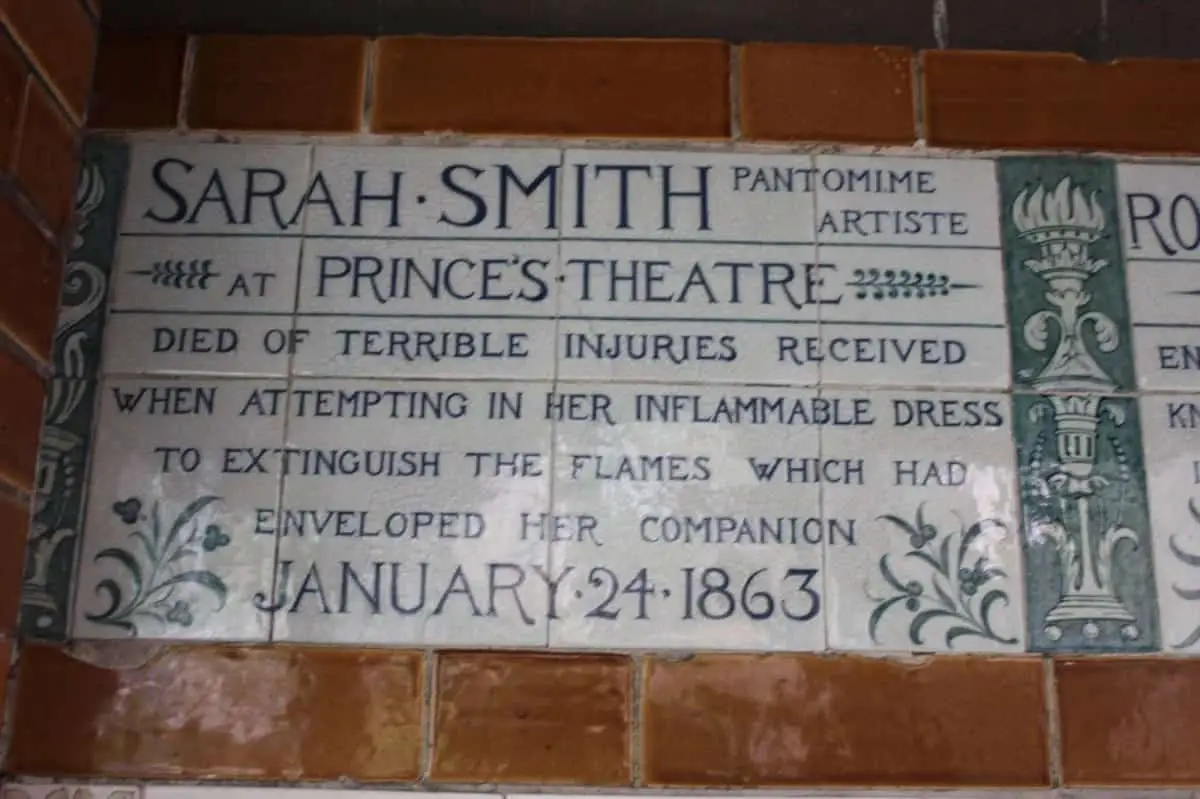Postman’s Park, was named for the popularity with workers from the nearby GPO’s headquarters opened in 1880.
The park is situated on the site of the former churchyard and burial grounds of St Botolph’s Aldersgate church, and expanded over the next 20 years to incorporate the adjacent burial grounds of Christ Church Greyfriars and St Leonard, Foster Lane.
The shortage of burial sites, meant that often corpses were laid ontop of each other, thus elevating the park above the streets which surround it.
In 1900, the park became the location for George Frederic Watts’s Memorial to Heroic Self Sacrifice, a memorial to ordinary people who died while saving the lives of others and who might otherwise be forgotten, in the form of a loggia and long wall housing ceramic memorial tablets.
In 1972, key elements of the park, including the Memorial to Heroic Self Sacrifice, were grade II listed to preserve their character.

